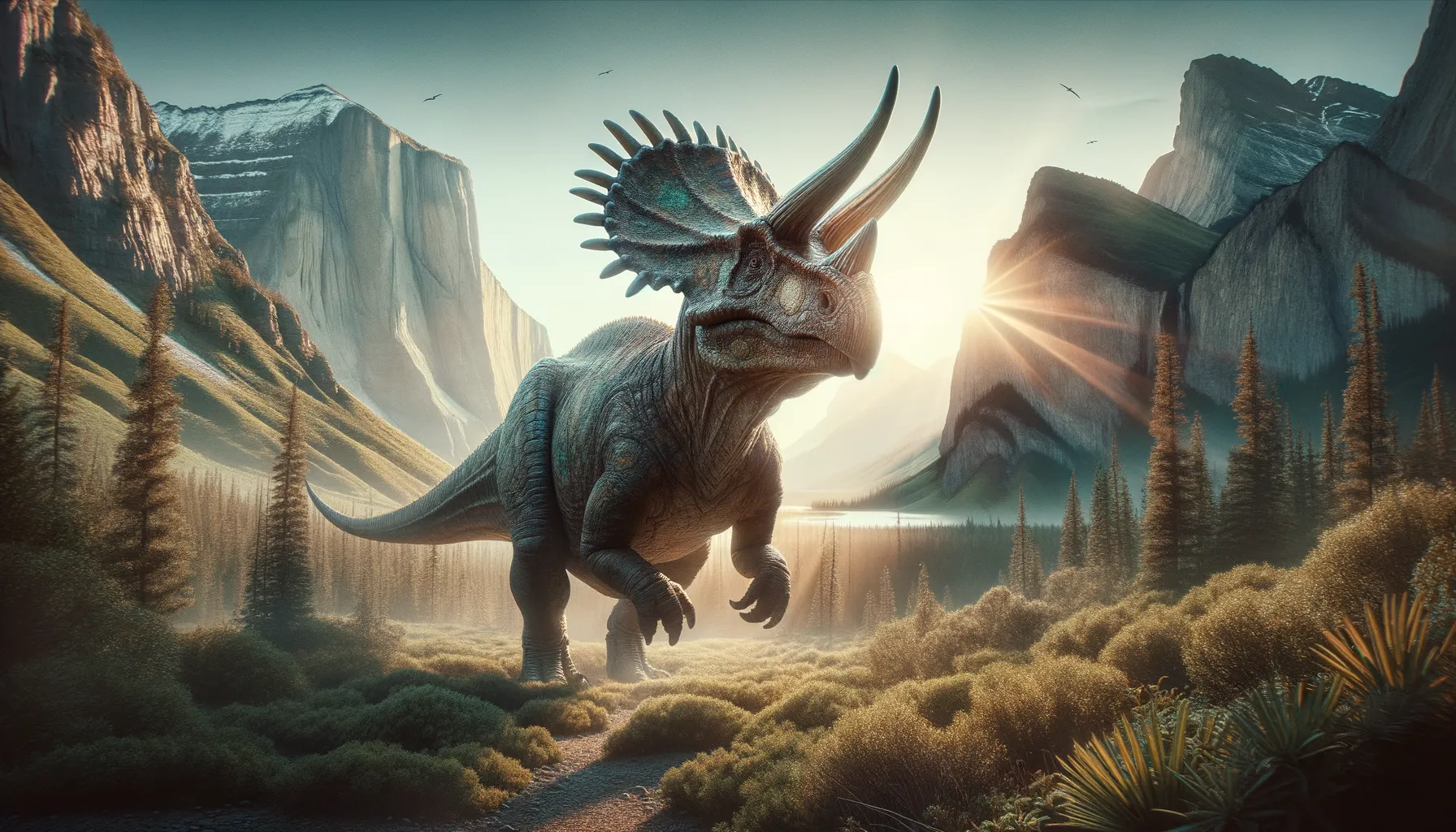
Wendiceratops
Horns that tell a million-year story!
Period
Cretaceous
Length
Approximately 6 meters from head to tail.
Height
Stood about 3 meters at the tallest point.
Weight
Estimated to weigh around 1 to 2 tons.
Wendiceratops was a horned dinosaur that lived around 79 million years ago. It was part of the Ceratopsidae family, characterized by its large frill and horned face. This dinosaur roamed what is now North America, primarily around present-day Alberta. It had a distinctive set of horns, including a prominent nose horn, making it unique among its relatives. The fossils found have provided significant insights into the evolution of horned dinosaurs.
Diet
Wendiceratops was a herbivore, feeding on a diet primarily made of cycads, ferns, and other prehistoric plants. Its beak-like mouth was well adapted to clipping vegetation, which it digested using its large, flat teeth.
Hunting
As a herbivore, Wendiceratops did not hunt but instead browsed for plants. It used its keen sense of smell to locate food sources and preferred to graze in groups for protection.
Environmental challenges
Wendiceratops faced challenges from harsh seasonal changes and potential droughts that affected its food availability. Predators, such as large theropods, were a constant threat, requiring it to stay vigilant and rely on its herd for safety. Its environment was largely forested, which also subjected it to forest fires and other natural disasters.
Speed
Wendiceratops was relatively slow, moving with steady, deliberate steps.
Lifespan
Likely around 15 to 20 years in the wild.
First discovery
Discovered in 2010 in Alberta, Canada.
Fun Facts
- Wendiceratops is a relatively newly discovered dinosaur, first described in 2015.
- It is named after Wendy Sloboda, a famous fossil hunter who discovered the first bones of this dinosaur in Canada.
- Wendiceratops was part of the ceratopsian family known for their impressive horns and frills.
- This dinosaur lived approximately 79 million years ago during the Late Cretaceous period.
- Wendiceratops had a unique bony frill with circular openings called fenestrae, making it quite distinctive.
- It was an herbivore, meaning it primarily fed on plants.
- Fossils of Wendiceratops have been found in the region of Alberta, Canada.
Growth and Development
Young Wendiceratops likely grew quickly to reach a size less vulnerable to predators. Juveniles would have relied on adult group members for protection. As they matured, their horns and frills developed more prominently, signaling their readiness for social interactions.
Habitat
Wendiceratops inhabited lush, forested areas with ample plant life. It lived near water sources, which were essential for its survival, providing hydration and vegetation. The landscape was interspersed with rivers and floodplains that it navigated in herds.
Interaction with other species
Wendiceratops shared its habitat with other herbivorous dinosaurs and various predatory species. Its primary interactions with predators involved defensive tactics like horn displays. Among its own kind, it likely engaged in social behaviors, including group grazing and caring for the young communally.
Natural lifespan
In favorable conditions, it could live up to around 20 years.
Reproduction
Wendiceratops were likely oviparous, laying eggs in nests built on the ground. After laying eggs, females may have guarded them until they hatched. Hatchlings were vulnerable and likely received care from adults immediately after birth.
Social behaviour
Wendiceratops exhibited strong social behavior, moving in herds for protection and cooperative care of the young. Social hierarchies within the group could be established based on size and horn displays. Herds provided safety in numbers from predators.
Fossil locations
The fossils of Wendiceratops have been primarily found in Alberta, Canada. Its discovery in the area has significantly contributed to our understanding of ceratopsid diversity and evolution. These fossils are preserved in sandstone, indicative of their riverine habitat during the Late Cretaceous.
